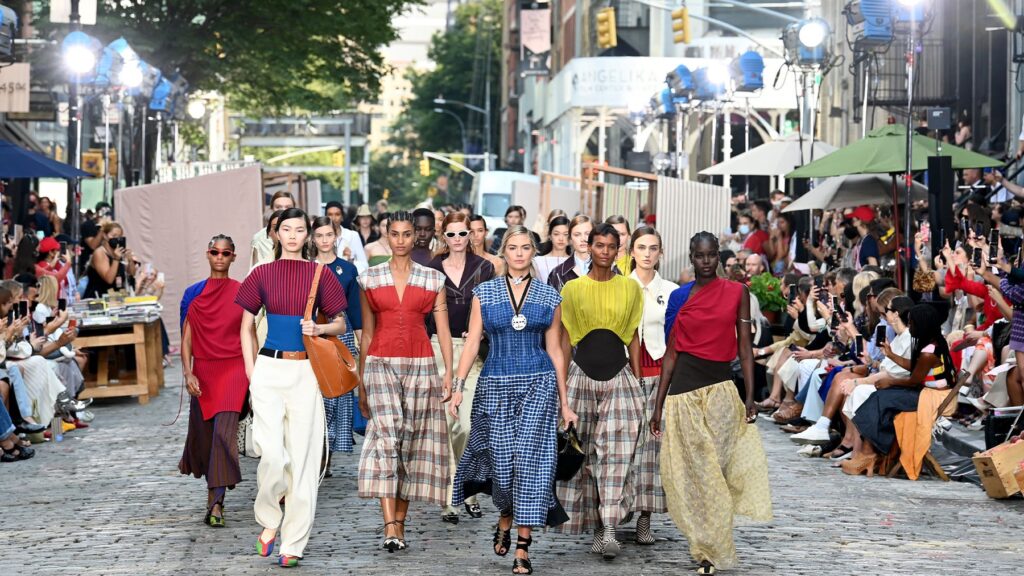Shared from Business of Fashion
A Changing Lineup
- New York Fashion Week, which begins Feb. 11, has seen its schedule shaken up repeatedly in recent seasons
- Tom Ford and Marc Jacobs are among the former mainstays not showing
- Proenza Schouler and Altuzarra, emerging designers Elena Velez and Peter Do, plus Telfar and Shayne Oliver are among the designers and brands on the schedule or planning events
New York Fashion Week is perennially in flux — it’s become almost routine for a supposed linchpin of the schedule to drop out. But the lineup always seems to coalesce around a new group of well-known names and emerging stars to justify the whole exercise for another season. For Fall/Winter 2022, long-time anchor Marc Jacobs is once again nowhere to be seen, and Tom Ford’s last-minute decision to postpone his show to April robbed the schedule of one of its remaining internationally recognised designers. And yet, there are still billion-dollar brands (Tory Burch, Michael Kors, Coach), recent breakouts (Elena Velez, Peter Do) and new trends that will quickly make their way to stores. Shayne Oliver is staging an event for his new luxury brand, and Telfar has another multimedia project planned. Virtual fashion and the metaverse are sure to feature in at least a handful of brands’ presentations. It’s not quite Paris or Milan, but there’s a reason people keep showing up.
The Bottom Line: Some more last-minute alterations aren’t out of the question. Supply-chain issues and travel restrictions threaten to turn the already hectic process of securing samples, and the models to wear them on the runway, into a true logistical nightmare.
What Peloton Can Tell Us About Fashion’s Future
- Peloton reports second-quarter results on Feb. 8
- Peloton has much in common with DTC clothing brands that had a strong run during the pandemic but have struggled of late
- The bike seller’s apparel sales topped $100 million last year, but growth in that category has slowed, CNBC reported last week
Peloton isn’t technically a fashion brand (though with over $100 million in apparel sales last year, it’s a minor player in the activewear category). But it shares enough of the industry’s DNA to serve as a useful bellwether when it releases earnings this week. To start, the exercise device maker ripped chapters from the direct-to-consumer playbook, from its digital-first sales strategy to its intensely loyal customer community. It also benefitted from the same stay-at-home pandemic trends that lifted countless athleisure and activewear brands. And much like its DTC and activewear peers, it’s fallen on hard times recently, recording slower growth, supply-chain problems and rising costs. The parallels shouldn’t be exaggerated; there’s quite a difference between selling $2,500 stationary bikes and $100 sneakers or $30 T-shirts. That said, if Peloton can extricate itself from its current problems, there’s hope for all the other brands that are struggling.
The Bottom Line: There’s little sign that the brands that rode the pandemic and DTC booms have hit bottom. Those with strong, differentiated products and loyal customer bases will make it through to the other side, but there are likely more tough times ahead.
The Week Ahead wants to hear from you! Send tips, suggestions, complaints and compliments to [email protected].
Join BoF Professional to get access to the exclusive insight and analysis that keeps you ahead of the competition. Subscribe to BoF Professional here.
Images and Article from Business of Fashion
#York #Fashion #Weeks #Revolving #Door

